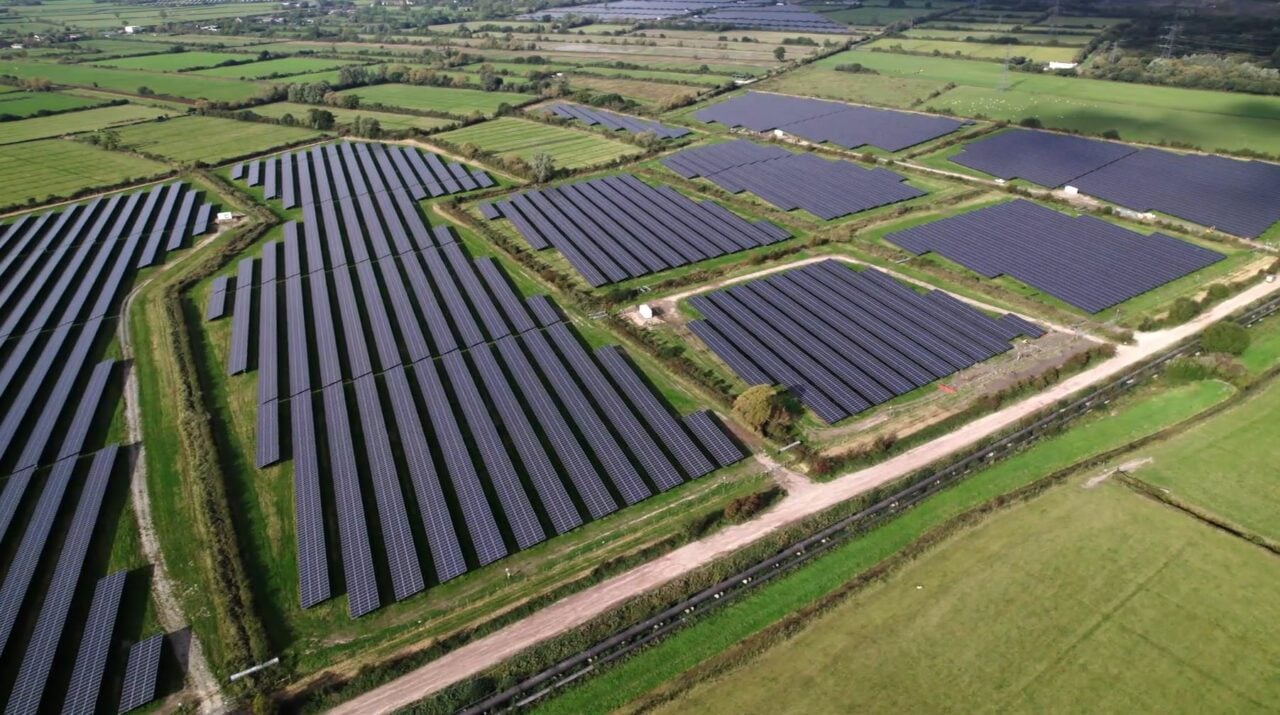
The interim results referred to ongoing conversations around a proposed increase in the company’s investment policy energy storage limit to further diversify its portfolio. Image: NextEnergy.
Solar and energy storage specialist fund NextEnergy Solar Fund (NESF) has published its interim results as of 30 September 2022, which suggest that the new windfall tax will have a limited impact for its portfolio given its diversification.
The report predicted the potential impact of the windfall tax levy based on information available at the date of the publication and considering the methodology used to derive NESF’s most recent NAV.
The new windfall tax for low carbon generators announced by Jeremy Hunt last week, will include a 45% levy on any in-scope revenues that exceed £75/MWh. The tax will apply when extraordinary revenues exceed £10 million. Full details are expected to be confirmed during the December 2022 legislative process.
The tax won’t apply to subsidised assets, which for NESF make up roughly 50% of NESF’s revenue profile, which benefits from Renewables Obligation Certificates (ROCs) and Feed-in-Tariffs (FITs) support, which increase in conjunction with the Retail Price Index (RPI).
Additionally, it will not apply to the company’s energy storage assets either, an area the company said is ‘strategically positioned’ in its statement.
Chairman at NESF, Kevin Lyon, said that the company “remains supportive of a UK windfall tax.
“We believe that investment in renewable energy is key to solving our nations' current cost of living crisis and long-term energy security, decarbonisation and cost challenges. We would therefore make the case for a consistent approach to the encouragement of reinvestment of proceeds into new projects through associated tax relief so that equality is created with the oil and gas sector.”
The report also stated that NESF has maintained its inflation assumption approach using independent inflation data from HM Treasury Forecasts, as well as long-term implied rates from the Bank of England’s UK assets.
Inflation rate (UK RPI) assumptions:
| 30 September 2022 | 30 June 2022 | 31 March 2022 | |
|---|---|---|---|
| 2023 | 12.40% | 11.00% | 8.00% |
| 2024 | 5.90% | 4.20% | 3.70% |
| 2025 | 3.60% | 3.60% | 3.30% |
| 2026 | 3.40% | 3.90% | 3.40% |
| 2027 | 3.90% | 4.10% | 3.30% |
| 2028-2030 | 3.00% | 3.00% | 3.00% |
| 2030 onwards | 2.25% | 2.25% | 2.25% |
In response to the markets current volatility, including the Bank of England implementing further increases to the base rate at 1%, NESF has said that it will increase its unlevered discount rate by 0.5%.
The report provided a table to show discount rate assumption for the 30 September 2022 NAV calculation:
| Premium | 30 September 2022 | 31 March 2022 | |
|---|---|---|---|
| UK unlevered | n/a | 6.25% | 5.75% |
| UK levered | 0.7-1.0% | 6.95-7.25% | 6.45-6.75% |
| Italy unlevered 1 | 1.5% | 7.75% | 7.25% |
| Subsidy-free (uncontracted) 2 | 1.0% | 7.25% | 6.75% |
| Life extensions 3 | 1.0% | 7.25-8.35% | 6.75-7.75% |
(1) Unlevered discount rate for Italian operating assets implying 1.50% country risk premium. (2) Unlevered discount rate for subsidy-free uncontracted operating assets implying 1.0% risk premium. (3) 1.0% risk premium for cash flows after 30 years where leases have been extended.
Looking to the future, NESF pointed to ongoing conversations with investors around a proposed increase in the company’s investment policy energy storage limit from 10% of GAV. This, the report stated, will help further diversify its portfolio and increase returns for shareholders.
NESF will maintain its dividend target of 7.52p per ordinary share.
The interim results also included a number of highlights for NESF this year, including: a combined installed power capacity of 865MW; a 19% increase in electricity generation from the same period last year to 639GWh; 99 fully operating solar assets as of 31 March 2022; and the company’s first 50MW battery storage project in Scotland.
Responding to the interim results Lyon commented: “NESF has significantly increased electricity generation to 639GWh, a 19% increase from the same period last year.
“The Group has also successfully increased its diversification, by making notable strides in energy storage, having started construction on the Company's first 50MW battery storage project through JVP1 in Fife, Scotland. Going forward, energy storage holds an increasingly important role in NESF's future strategy, providing the opportunity for both diversification and growth. The Company is in an excellent position through its joint venture partnerships with Eelpower, and its existing co-located battery programme, to unlock value for shareholders.”
Earlier this month NESF also published its first standalone sustainability report, which is to detail the company’s 360° approach to sustainability.

